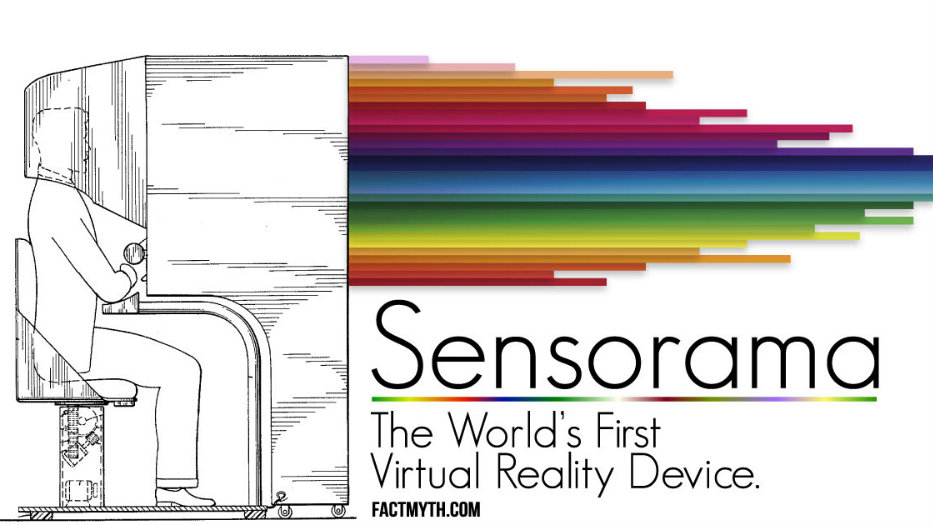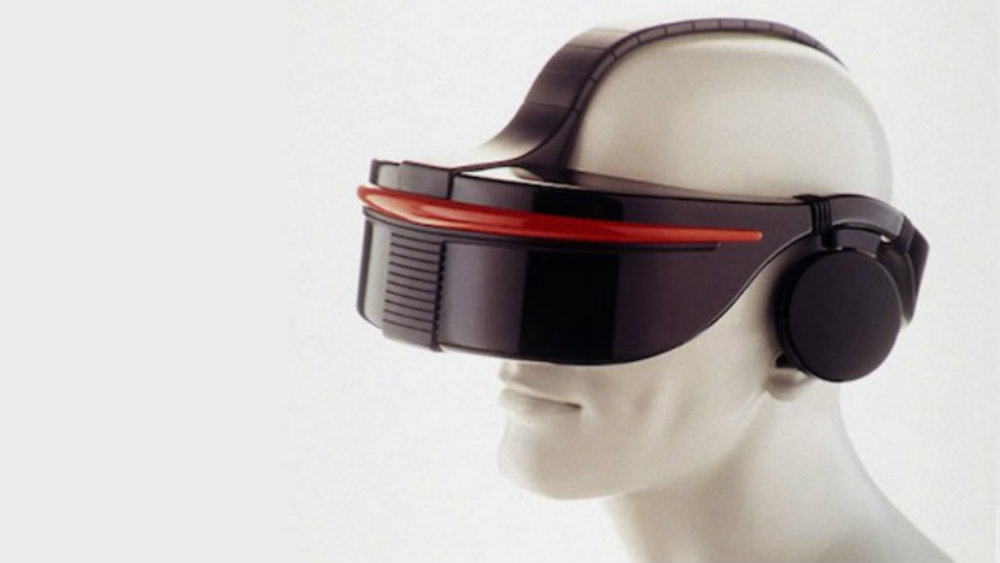The first virtual reality headset was created in 1968 by American computer scientist Ivan Sutherland and his student, Bob Sproull. While this was the first instance of a VR device resembling what we know and use today, the concept of ‘virtual reality’ was being postulated in art and literature from as far back as the 1860s.
To fully understand the evolution of this idea, we need to take a step back to see precisely how VR developed from a mere postulation, into a reality all of its own.
When did ‘virtual reality’ enter the public consciousness?
Notably, and somewhat predictably, the notion of ‘virtual reality’ entered the zeitgeist via science fiction, with Stanley G. Weinbaum‘s 1935 short story ‘Pygmalion’s Spectacles’. This vision of VR told of a goggle-based contraption that offered users a holistic holographic experience that went as far as to include touch and olfactory elements.

Whether we want to go as far as saying that Stanley ‘called it’ or not, his vision did offer something for developers to aim for and does border somewhere close to the current state of VR (some 82 years down the line).
So…
How did we get to VR as we know it today?
To help you understand the evolution of the medium, we’ve put together a comprehensive timeline to show the key steps in the journey from sci-fi concept to virtual reality as we know it today.
Kicking things off…
In 1957
Cinematographer Morton Heilig developed ‘Sensorama‘ as a culmination of his quest to build a more complete cinema experience. His arcade-type booth is considered the world’s first virtual reality machine.

Heilig’s Sensorama (patented in 1962) was a non-computerised VR machine. Early attempts in what later became known as the VR industry were unable to offer anything near the depth of visual field we enjoy today, so instead focused on creating phenomenologically complete virtual environments for their users.
To do this, the Sensorama displayed stereoscopic-3D film combined with audio, moving air, vibrations and even aromas.
In terms of navigability; the rotating chair, combined with the stereoscopic imagery, granted the user some control over the experience, nothing comparable to VR as we know it today, yet otherwordly nonetheless.
Shortly after…
In 1960
Heilig went on to develop the Telesphere Mask, considered the first VR Head Mounted Display (HMD).

This was quickly followed by…
In 1961
the development of the first motion-tracking HMD by the Philco corporation, known as the ‘Head Sight’.
This freaky-looking device was created for military purposes and consisted of a head mount, video screen and tracking system linked to cameras. The key development in this instance was that users could now move their head to trigger an adjusted view of the scene.
Then…
In 1965
American computer scientist Ivan Sutherland presented the notion of ‘the absolute display‘.
“The ultimate display would, of course, be a room within which the computer can control the existence of matter. A chair displayed in such a room would be good enough to sit in. Handcuffs displayed in such a room would be confining, and a bullet displayed in such a room would be fatal. With appropriate programming such a display could literally be the Wonderland into which Alice walked.” – Ivan Sutherland
In his 1965 paper and corresponding speech, Sutherland laid out a vision for the future of the VR format, both predicting and spurring the move towards indistinguishable-from-real computer graphics, audio, navigation, interaction and ultimately, total perceptual immersion. Whilst not a technological development itself, this theory was pivotal in the story of VR, guiding Sutherland’s own experimentations in VR as well as spurring innovation in VR throughout the generations that followed.
Building on this…
In 1968
Sutherland, along with his UNC Chapel Hill student, Bob Sproull, revealed their prototype for the first virtual and augmented reality head-mounted display in the paper “A Head-Mounted, Three-Dimensional Display”. Their contraption, due to its frightening ceiling-mounted aesthetic, soon became known as The Sword of Damocles.
With the theoretical and practical groundwork set, things started to pick up, and…
In 1977
MIT created the “Aspen Movie Map”, which allowed viewers to take a virtual tour of Aspen, Colorado.
This project included the first widely known use of a car-mounted gyroscopically stabilised camera that would take a snapshot every 10 feet, paving the way for platforms such as Google Streetview.
In 1985
The company VPL Research was founded as the first company to sell VR goggles and gloves. Then…
In 1987
VPL founder Jaron Lanier popularised the term “Virtual Reality”. All the research that had come before could now be spoken about collectively, bringing about the true birth of the VR industry.
Soon after…
In 1989
The first video game with 3D technology was brought to the mass market by ATARI.
Then…
In 1990/1
In true 90s style, virtual reality fever really started to take off.
“If dreams could be sold, what would you buy?”
To be in the driving seat of the Mars Rovers from Earth, Antonio Medina invented a virtual reality system known as “Computer Simulated Teleoperation”.
And…
Virtuality was launched – bringing the first mass-produced VR arcade games and entertainment systems that incorporated a multiplayer aspect to the public, who were left in awe at the level of immersion they offered.
In 1993
There was promise of VR finally entering the home as SEGA announced the SEGA VR headset, but unfortunately, the contraption never made it to public release due to safety concerns over effects on user eyesight.

In 1995
The cheap home VR headset finally arrived as “Virtual IO I-Glasses” were produced. This had the dual effect of making VR more accessible to the individual, whilst also bolstering public criticisms of VR as a lonely device.
In the same year, Nintendo brought us their 32-bit “Virtual Boy” console, which had a whole range of games for users to enjoy. There was only one problem… it needed your eyes! Dun dun dun…
As further developments waited for the requisite technological advancements, the VR hype subsided, kept alive only by films such as the original Ghost In The Shell and The Matrix, which helped to instantiate the sci-fi possibilities of the medium in the eyes of the world.
With the VR hype never truly finding the legs it originally promised, it seemed as if the format had suffered its final defeat, however as the tech finally caught up with the supporting ideas, the next key development came…
In 2010
With Google developing a stereoscopic 3D version of its Street View app.
Shortly after…
In 2012
Palmer Luckey wowed investors with his Oculus Rift prototype, bringing the spotlight of the VR industry onto his laid-back shoulders.
This…
In 2014
Lead to an impressed Zuckerberg purchasing Oculus VR for $2 billion, ultimately changing the VR landscape forever.
Also, that year came “Project Morpheus”, the first VR headset for Sony’s PS4, and Google gave us “Google Cardboard”.
And finally…
In Recent Years
VR has continued to progress in many distinct ways, with applications ranging from those in medicine to the exclusively entertainment-focused, even establishing itself as a format worthy of Cannes.
As a filmmaking tool, VR is showing great potential, so too in journalism, with The New York Times leading the way with an extensive catalogue of immersive experiential journalistic VR experiences.
In terms of the future of VR, no one in the industry is sure of what is to come. We are so far undergoing a process of experimentation that has led to some wonderful experiences, but the industry is also figuring out what it isn’t.
As this process continues we will start to see the industry carve out space or spaces it is meant to take up, whatever they may be. One thing is for sure, this time VR is here to stay.

